Seasoned rice is an easy and flavorful alternative to plain white rice. Cooked with chicken broth instead of water and a blend of herbs and spices, it’s packed with savory goodness in every bite. This budget-friendly side dish pairs well with a variety of meals, making it a delicious and versatile addition to your dinner table.
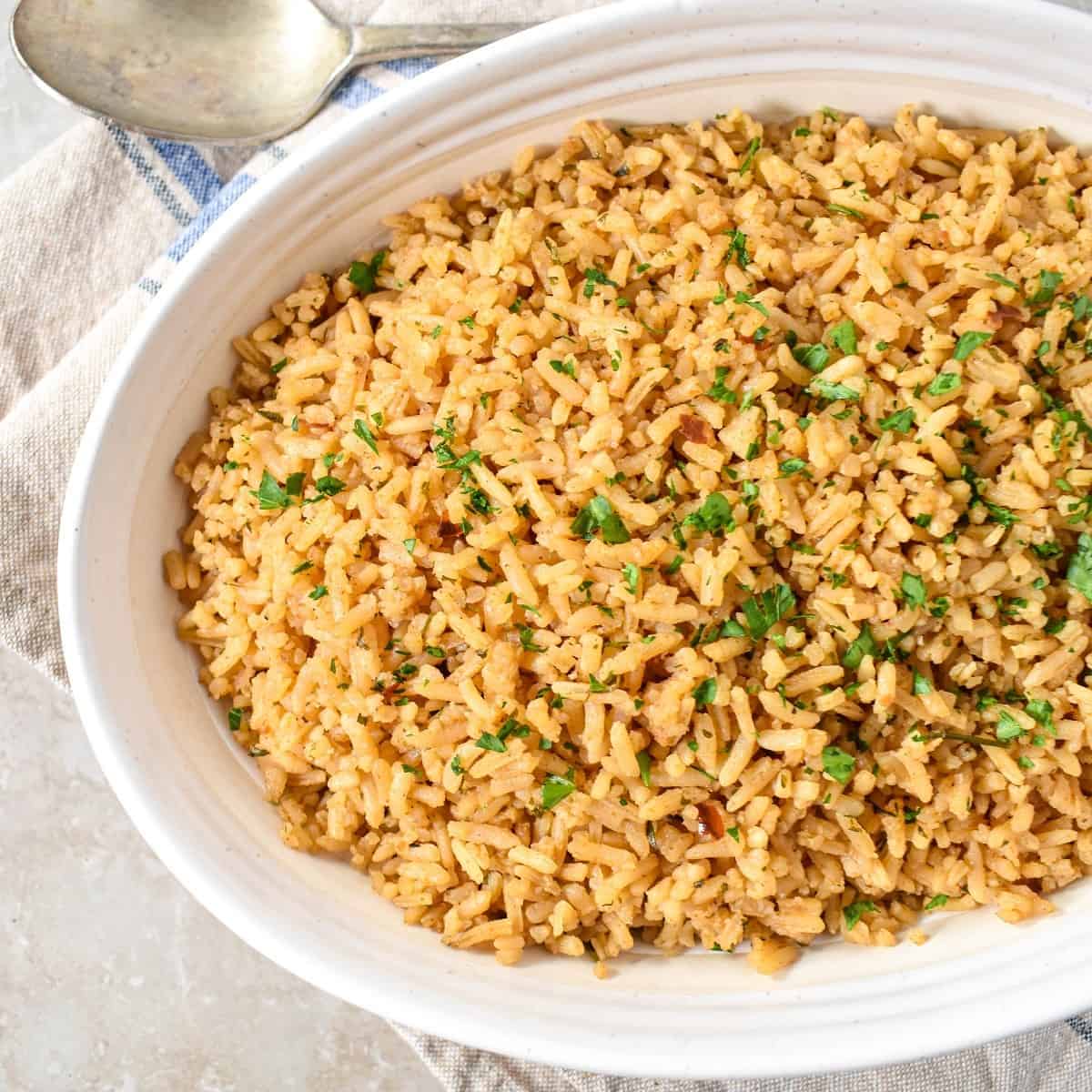
What’s new in the recipe
This recipe was originally published on March 25, 2023, and we’ve made some great updates! We’ve numbered the instructions for easier following, added a substitutions and variations section to give you more options, and expanded the recipe tips and notes to set you up for success. Plus, we’ve included “Jump To” links for simple navigation, so you can find what you need quickly.
Jump to:
What’s great about this recipe
- Versatile side dish – This seasoned rice pairs well with pork, chicken, beef, seafood, and tacos, making it a go-to for any meal.
- Budget-friendly – Made with pantry staples, this recipe is an easy and affordable way to add a satisfying side to any meal.
- Easy to make – With minimal prep and straightforward steps, this rice dish is perfect for busy weeknights or effortless meal planning.
- Great for meal prep – Make a batch ahead of time and store leftovers for quick, easy sides throughout the week.
Ingredients
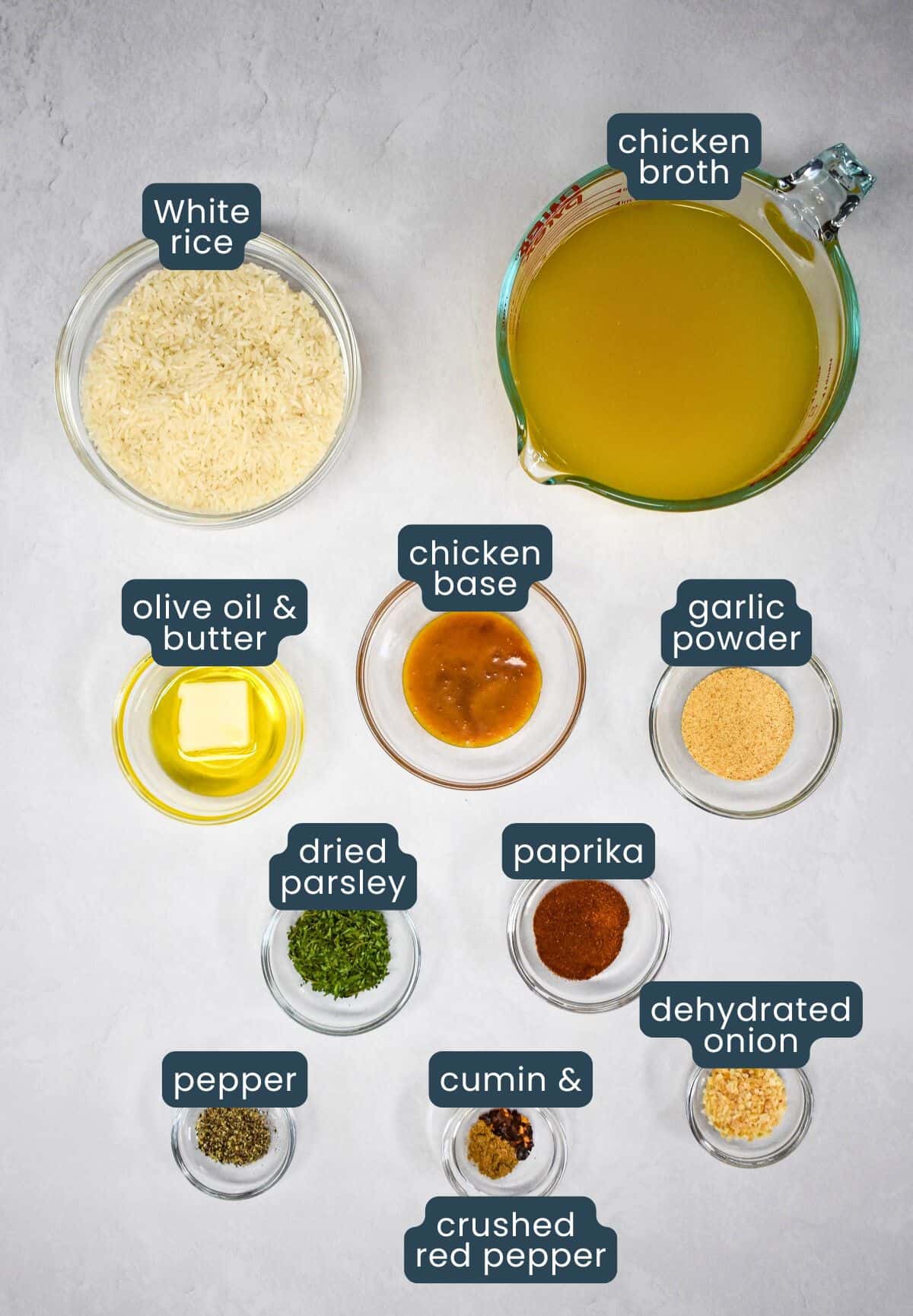
- Oil – This rice is made with a combination of olive oil and butter. Use regular salted butter or unsalted if you are sensitive to salt.
- Rice – Long grain white rice works best. Do not use brown rice because the cooking time and method are different.
- Herbs and spices – The rice is flavored with paprika, garlic powder, dried parsley, dehydrated onion, black pepper, cumin, and crushed red pepper (optional). Fresh parsley for garnish is also optional. We use dehydrated onion in this recipe, so we don’t have to sauté it yet still get all the flavor. Salt is not added initially, but it might be needed at the end depending on taste.
- Chicken broth and base – We use regular chicken broth, but low sodium will work too. The chicken base gives the rice extra flavor. Find chicken base at the supermarket in the broth and soup aisle or online.
- See the recipe card for quantities and preparation.
How to make seasoned rice
- Add the butter and olive oil to a medium saucepan (about 3 quart), place over medium heat.
- When the butter is melted and foamy add the rice. Cook for 5 minutes to coat it with the oil and heat it up. Stir occasionally to move it around and prevent it from burning.
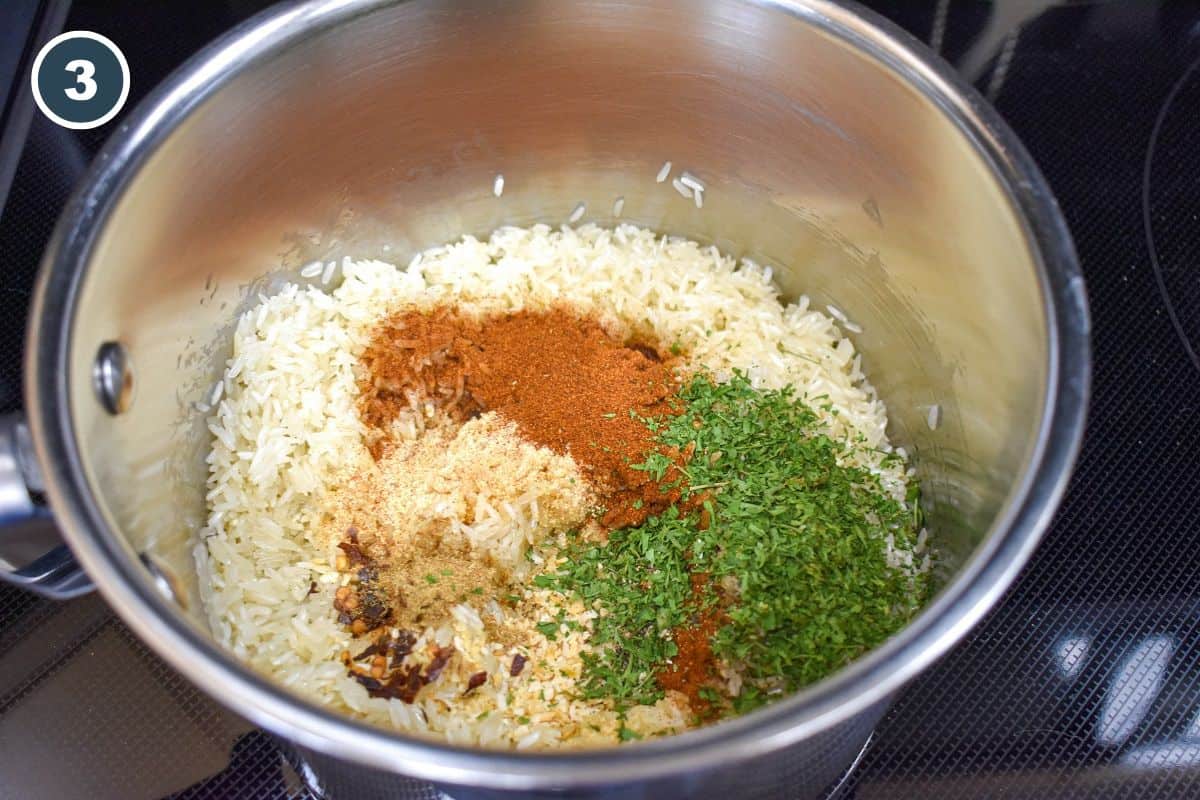
- Add the paprika, garlic powder, dried parsley, dehydrated onion, black pepper, cumin, and crushed red pepper (if using). Stir well.
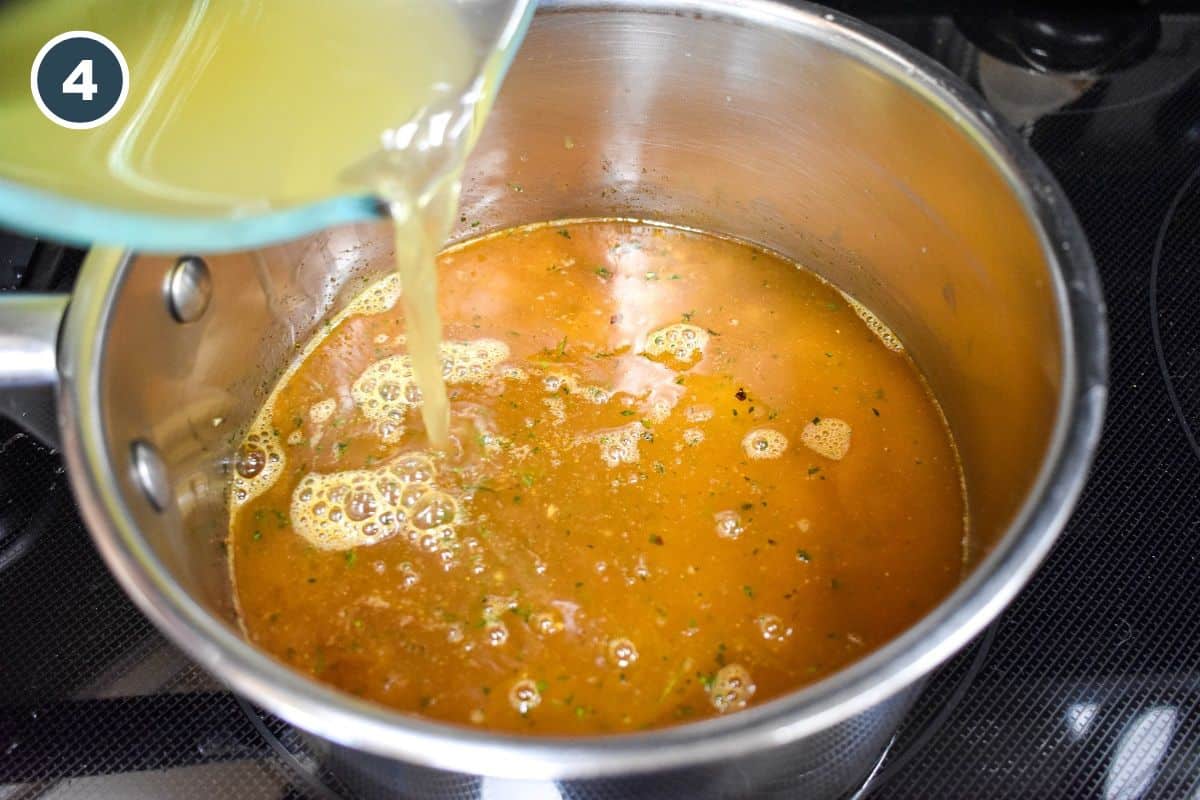
- Next, add the chicken broth while stirring. Then, add the chicken base and stir well until it dissolves. Raise the heat to high, bring to a boil.
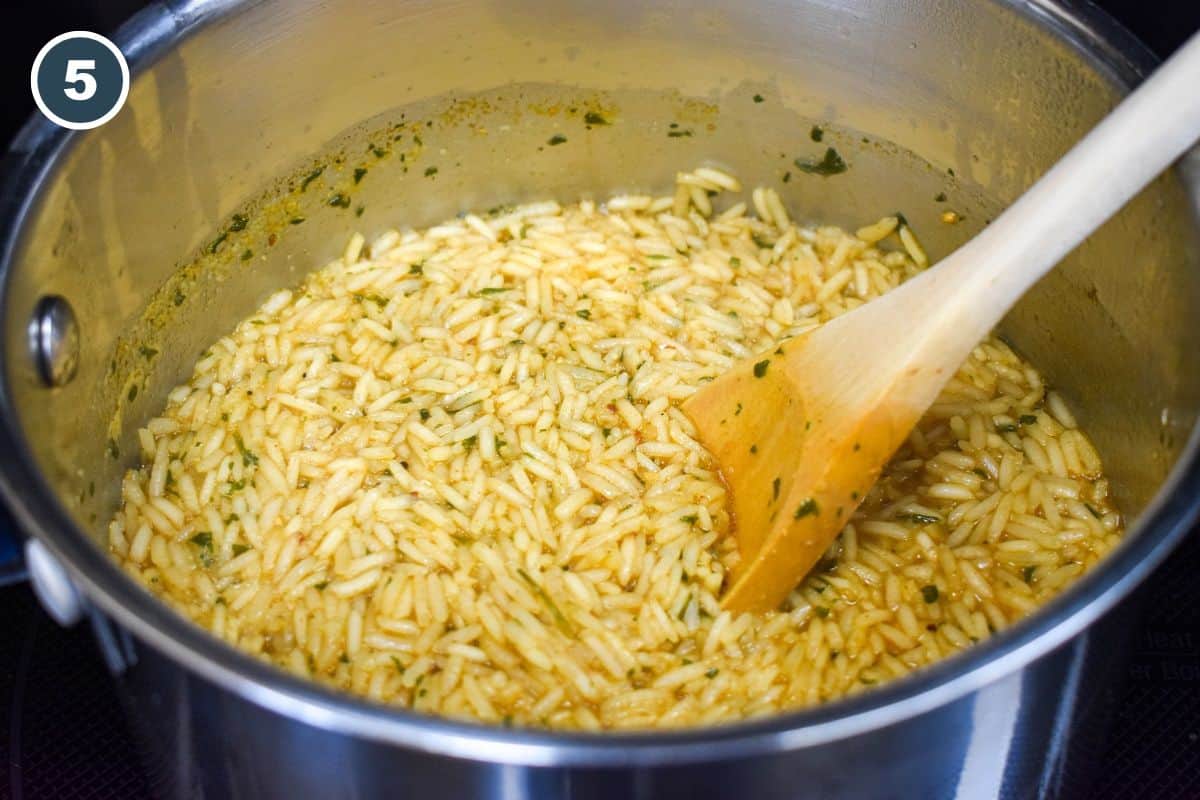
- Lower the heat to medium and let the broth simmer until the liquid is almost gone and the rice is visible on the surface (about 10 minutes). Stir occasionally to make sure the rice is not sticking to the bottom.
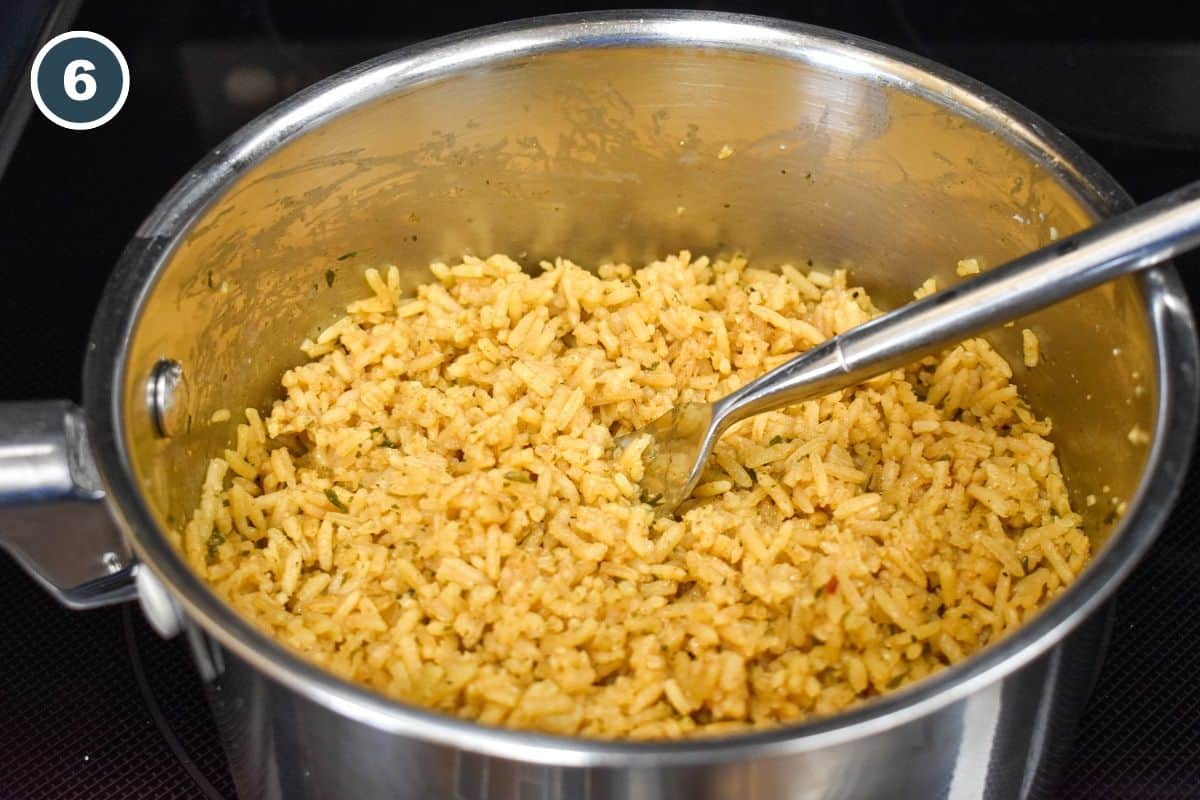
- Lower the heat to low, cover and cook for 20 minutes, or until the rice is no longer hard in the center. Stir only one time halfway through the cooking time. Uncover the pan and fluff with a fork to let steam escape.
- Taste and add salt if needed. As a reference we added a pinch to ours. Transfer the rice to a serving plate and garnish with fresh parsley, if desired.
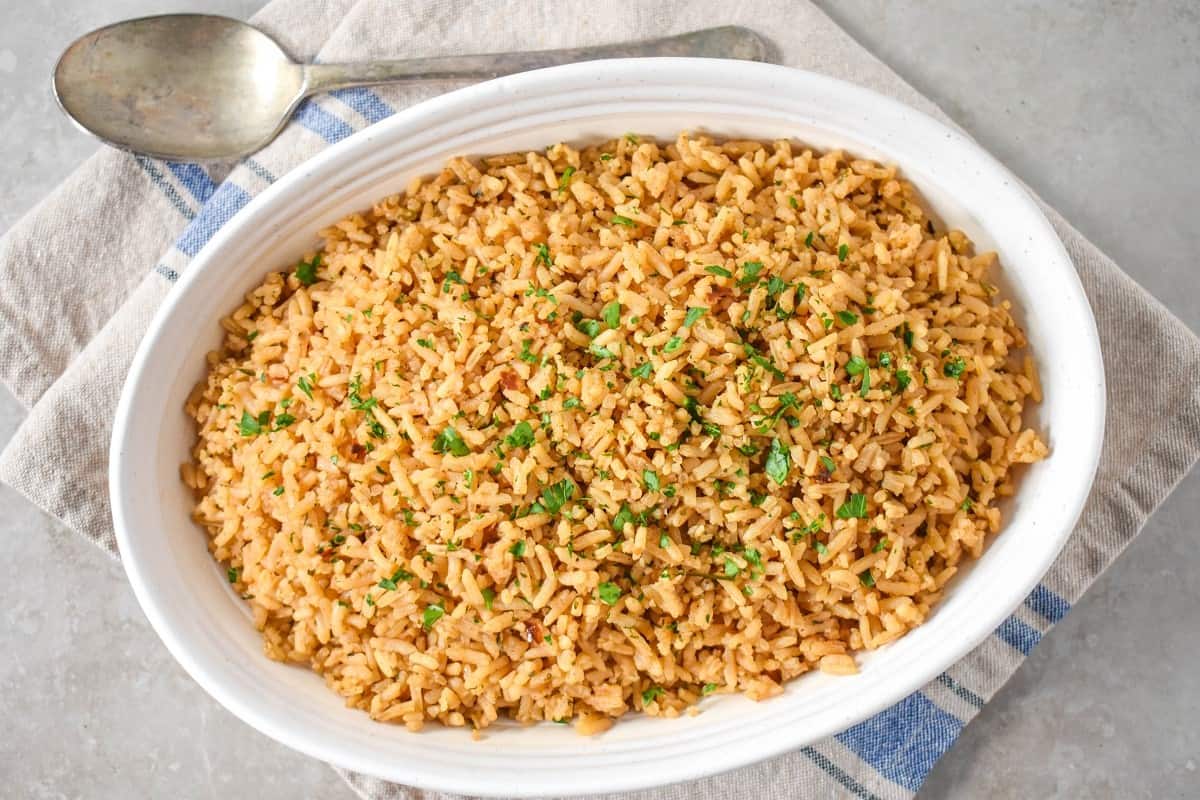
Substitutions and variations
- Oil alternatives – If you don’t have olive oil, you can use avocado oil, vegetable oil, or canola oil. These neutral oils work well and won’t overpower the flavors. For a richer taste, you can also use only butter (salted or unsalted, depending on your preference).
- Herb and spice swaps – Stick with dried herbs to maintain the intended texture and flavor balance. Instead of dried parsley, you can use dried oregano or thyme. Swap paprika for smoked paprika for a subtle smoky taste. If you don’t have dehydrated onion, use onion powder instead.
- Rice alternatives – Other types of rice with a similar cooking time and method to long-grain white rice include jasmine rice or basmati rice. Avoid brown rice, as it requires different cooking instructions.
- Broth and base substitutes – Instead of chicken broth, use vegetable broth for a vegetarian-friendly version. You can also swap chicken base with vegetable base.
- Lower sodium options – Use low-sodium broth, base, and unsalted butter if you are sensitive to salt. Taste at the end and adjust as needed.
Storing and reheating instructions
- Cool the rice quickly – Cool leftover rice as quickly as possible. A good way to do this is to spread it in a shallow dish or pan so it cools evenly in a thin layer. Refrigerate the pan until the rice has cooled completely, then transfer it to storage.
- Refrigerator – Store the rice in an airtight container in the refrigerator for 1–2 days.
- Freezer – For longer storage, freeze the rice in a freezer-safe airtight container or resealable bag for up to 2 months. Flatten the bag for easier thawing.
- Reheating – If frozen, thaw the rice in the refrigerator overnight before reheating.
- Microwave – Reheat in the microwave until hot and steaming. Loosely cover with a clean paper towel to help retain moisture if desired.
- Skillet – Warm the rice in a non-stick skillet over medium-low heat with 1–2 teaspoons of broth (or water) to help steam and rehydrate it. Stir occasionally until heated through.
- Food Safety – For food safety, reheat leftover rice to an internal temperature of 165°F before serving. Avoid leaving cooked rice at room temperature for more than 2 hours (or 1 hour if the temperature is above 90°F), as bacteria can grow quickly. For more information on food storage and safety guidelines visit U.S. Department of Agriculture and foodsafety.gov.
Recipe tips and notes
- Don’t remove the lid except once to stir halfway through the cooking time. Uncovering too often lets steam escape, which can affect the cooking process and leave the rice undercooked.
- Once the rice is covered, avoid over-stirring. Stirring too much can make it gummy.
- Use a heavy-bottomed pot with a tight-fitting lid to help distribute heat evenly and prevent scorching.
- Fluff, don’t mash the rice. Use a fork instead of a spoon to fluff the rice after cooking. This keeps the grains separate and prevents them from becoming sticky.
- If the rice is still firm after the recommended cooking time, cover and let it steam for a few more minutes off the heat.
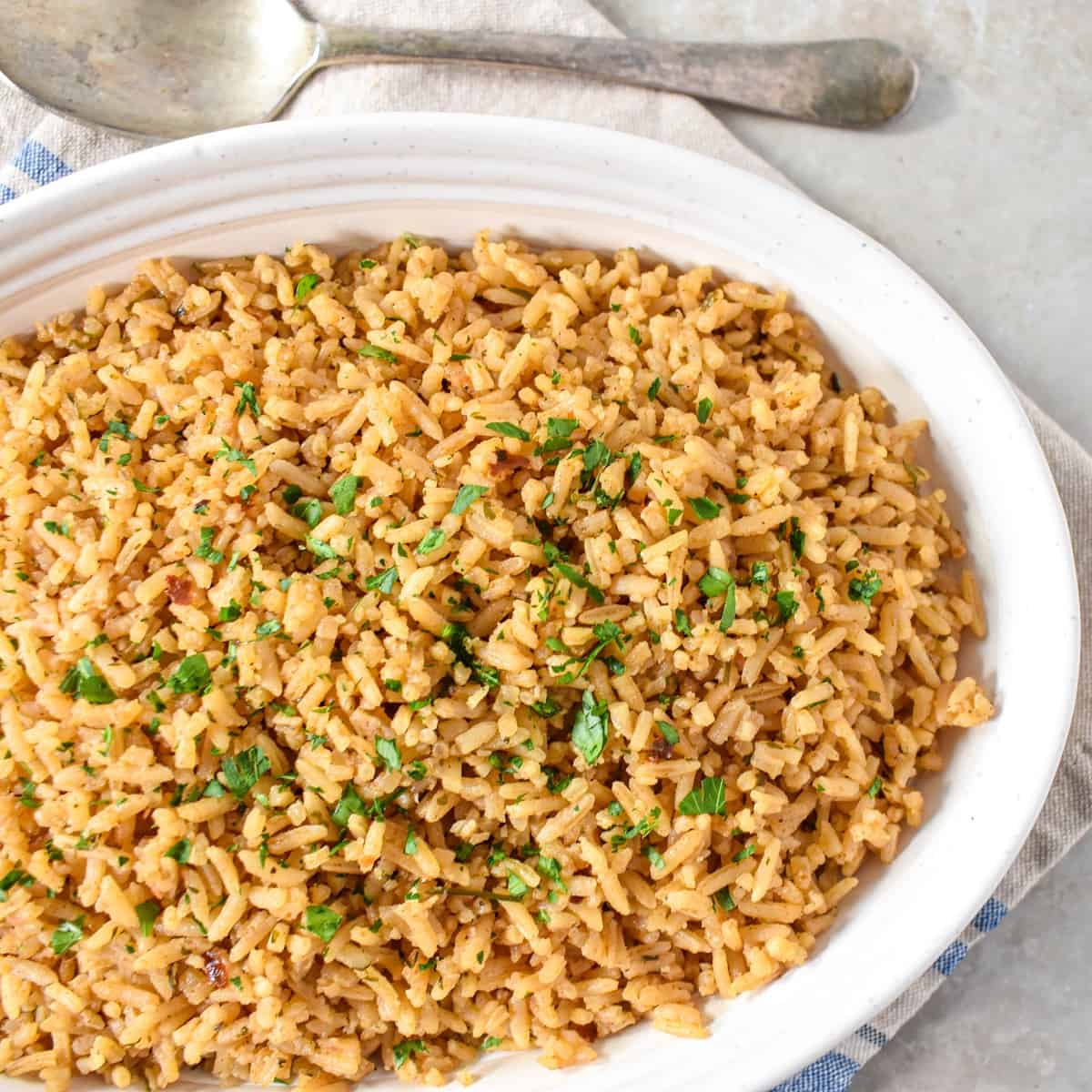
Rice dishes are popular because they are affordable and a great way to stretch your food budget. Plus, they pair well with just about any meal. Serve this rice side dish with mushroom pork chops, Salisbury steaks, or pork pot roast for a meal the whole family will enjoy.
For more rice recipes, try mushroom wild rice pilaf, or our popular chicken flavored rice.
Join Us
Subscribe to our Newsletter to get the latest recipes, cooking tips, and kitchen inspiration delivered straight to your inbox. Don’t forget to follow us on social media for daily recipe ideas and more!
📖 Recipe
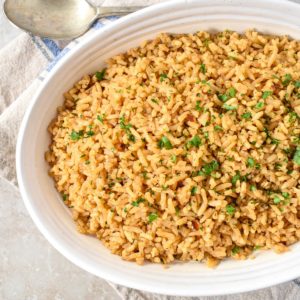
Seasoned Rice
Ingredients
- 1 tablespoon Butter use unsalted butter if you are sensitive to salt
- 1 tablespoon Olive Oil
- 1½ cups Long-Grain White Rice washed and drained
- 2 teaspoons Paprika
- 2 teaspoons Garlic Powder
- 2 teaspoons Dried Parsley
- 1 teaspoon Dehydrated Onion
- ¼ teaspoon Black Pepper
- ⅛ teaspoon Cumin Powder
- Pinch Crushed Red Pepper optional (leave it out if you don’t like spicy)
- 3 cups Chicken Broth use reduced-sodium broth if you are sensitive to salt
- 1 tablespoon Chicken Base
- Salt if needed at the end
- Chopped Fresh Parsley for garnish optional
Instructions
- Add the butter and olive oil to a medium saucepan (about 3 quarts) over medium heat.
- When the butter is melted and sizzling, add the rice. Cook for 5 minutes, stirring occasionally to coat it with oil and prevent burning.
- Add the paprika, garlic powder, dried parsley, dehydrated onion, black pepper, cumin, and crushed red pepper (if using). Stir well to combine.
- Pour in the chicken broth while stirring, then add the chicken base and stir until dissolved.
- Raise the heat to high and bring the broth to a boil (about 2–3 minutes).
- Reduce the heat to medium and let the broth simmer until the liquid is almost gone and the rice is visible on the surface (about 10 minutes). Stir occasionally and briefly to prevent sticking.
- Lower the heat to low, cover the saucepan, and cook for 20 minutes, or until the rice is no longer hard in the center. Stir only once halfway through cooking.
- Once done, uncover the pan and fluff the rice with a fork, allowing the steam to escape.
- Taste and add salt if needed (as a reference, we added a pinch to ours).
- Transfer the rice to a serving plate and garnish with fresh parsley, if desired.
Notes
- Don’t remove the lid except once to stir halfway through the cooking time. Uncovering too often lets steam escape, which can affect the cooking process and leave the rice undercooked.
- Once the rice is covered, avoid over-stirring. Stirring too much can make it gummy.
- Use a heavy-bottomed pot with a tight-fitting lid to help distribute heat evenly and prevent scorching.
- Use a fork instead of a spoon to fluff the rice after cooking. This keeps the grains separate and prevents them from becoming sticky.
- If the rice is still firm after the recommended cooking time, cover and let it steam for a few more minutes off the heat.
Nutrition
The nutritional information above is computer generated and is only an estimate. There is no guarantee that it is accurate. This data is provided as a courtesy for informational purposes only.



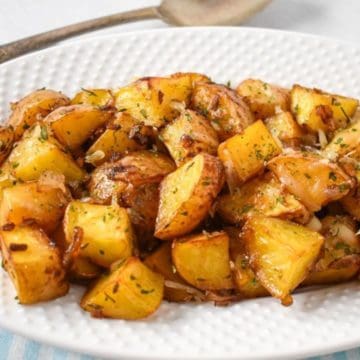
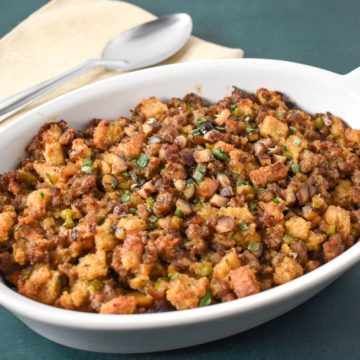

Leave a Reply